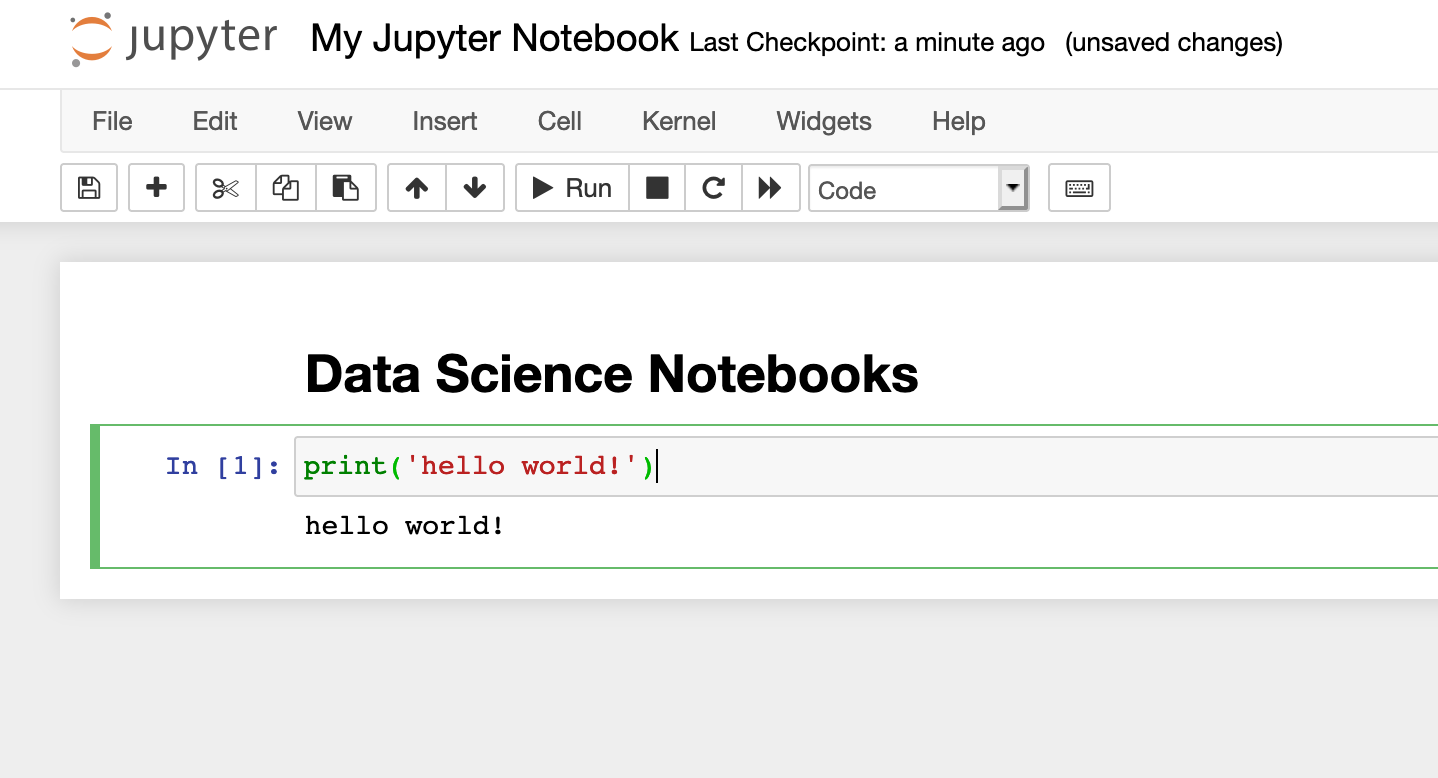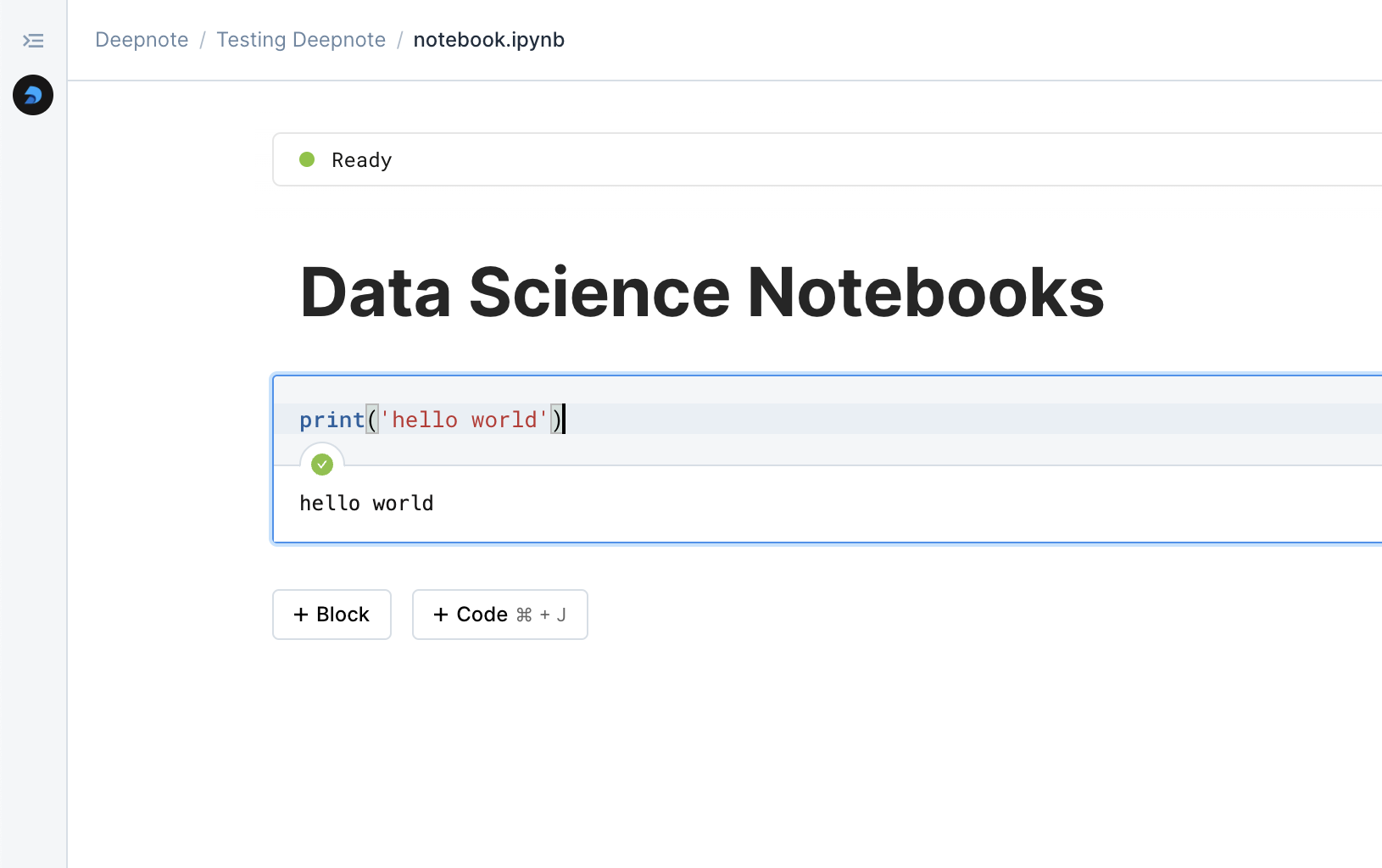

Jupyter

Comparing two data science notebooks.






Choosing the right notebook is crucial for data scientists, machine learning enthusiasts, and programmers. Two popular options are Jupyter Notebook and Deepnote. This post will compare these platforms, focusing on their key features, benefits, and use cases to help you make an informed decision.
Jupyter Notebook is the traditional open-source application that allows users to create and share documents containing live code, equations, and visualizations. While supporting multiple programming languages, it operates as a locally-hosted solution primarily focused on individual code execution and basic documentation needs.
Deepnote is a cloud-based, collaboration-first data platform designed for modern data science workflows. It emphasizes ease of use, collaboration, and integration with various data sources and tools. Deepnote is tailored for teams working on complex data projects and is equipped with advanced features like AI-powered code completion and interactive dashboards.
The fundamental distinction between Jupyter Notebook and Deepnote reflects a broader evolution in data science tooling and workflows.
Jupyter Notebook, while pioneering in its time, essentially provides a locally-hosted computational environment centered around basic code execution and documentation. It serves as an entry point for beginners and academic work, offering a straightforward way to combine code, text, and basic visualizations. However, its limitations become apparent in professional settings where more robust features are required. Users must manually handle everything from environment management to version control, and collaboration often involves sharing static notebook files or setting up additional infrastructure.
Deepnote, in contrast, represents a comprehensive data platform built for modern, professional workflows. It transcends the traditional notebook concept by providing a complete ecosystem where the notebook is just one component of a larger, integrated workspace. This includes native support for multiple data sources, SQL integration with visual schema exploration, automated scheduling capabilities, and sophisticated environment management. The platform's built-in version control, real-time collaboration features, and advanced visualization tools with BI-like capabilities through data apps demonstrate its focus on professional team productivity. Rather than requiring users to cobble together various tools and extensions, Deepnote provides an all-in-one solution that addresses the full spectrum of data science workflow needs, from initial data exploration to final presentation and deployment.
Deepnote's approach to AI integration is comprehensive, with its Autonomous AI assistant understanding notebook context, generating and fixing code, and creating visualizations through natural language commands. Recent updates have enhanced its ability to generate and edit charts using natural language.
Jupyter Notebook has no built-in AI capabilities. Users need to manually install and configure additional packages for any AI-assisted coding or analysis.
Deepnote provides a fully managed cloud environment where teams can begin working immediately. Its environment includes pre-configured tools, integrated version control, and automatic dependency management. The platform supports Python, R, SQL, and custom environments, with enhanced AI code completion powered by Codeium.
Jupyter Notebook requires local installation and manual environment setup. Users need to handle their own package management, and working with different programming languages often requires additional configuration.
Deepnote excels in modern data connectivity, offering built-in connectors for major platforms like BigQuery, Snowflake, and Redshift. Its visual database schema explorer and integrated data frame outputs streamline data exploration.
Jupyter Notebook requires manual setup of database connections and relies on user-installed libraries for data source integration. Each connection needs to be configured individually, and there's no built-in data source management.
Deepnote's collaboration capabilities include real-time multi-user editing, built-in version control, team workspaces, advanced permission management, and integrated commenting and review systems.
Jupyter Notebook was designed as a single-user tool. Collaboration typically involves sharing notebook files through external means like email or Git, with no built-in real-time collaboration features.
Deepnote manages computational resources automatically in the cloud, allowing teams to focus on their work rather than infrastructure. Users can easily scale resources up or down as needed, with persistent storage and consistent environments across team members.
Jupyter Notebook runs on local resources, limited by the user's machine capabilities. Any cloud computing needs require separate setup and configuration of cloud infrastructure.
Deepnote offers a freemium model with a free tier for basic usage, team plans with advanced features, enterprise solutions for larger organizations, and educational plans for academic institutions.
Jupyter Notebook is open-source and free to use, but requires users to provide their own computing resources and handle any additional infrastructure costs.
The choice between Jupyter Notebook and Deepnote reflects a fundamental shift in data science tooling. Jupyter Notebook remains a viable option for individual users, particularly in educational settings or for basic data science tasks. However, Deepnote represents the modern evolution of data science platforms, offering an integrated, AI-enhanced environment optimized for team collaboration and professional productivity.
For teams looking to maximize efficiency and leverage cutting-edge features, Deepnote's comprehensive platform offers significant advantages. For those requiring a simple, local solution for basic notebook functionality, Jupyter Notebook continues to serve as an accessible entry point to data science work.
The best choice ultimately depends on your specific needs, team structure, and workflow requirements. Consider starting with Deepnote's free tier to experience its modern features, or use Jupyter Notebook for straightforward, local development needs.
Ultimately, the choice between Jupyter Notebook and Deepnote depends on your specific needs. For advanced data science workflows and team collaboration, Deepnote offers significant advantages. However, Jupyter Notebook remains a versatile and accessible option for a wide range of users.
Actionable advice:
By understanding the strengths and limitations of each platform, you can make an informed decision that aligns with your data science goals and workflow requirements.